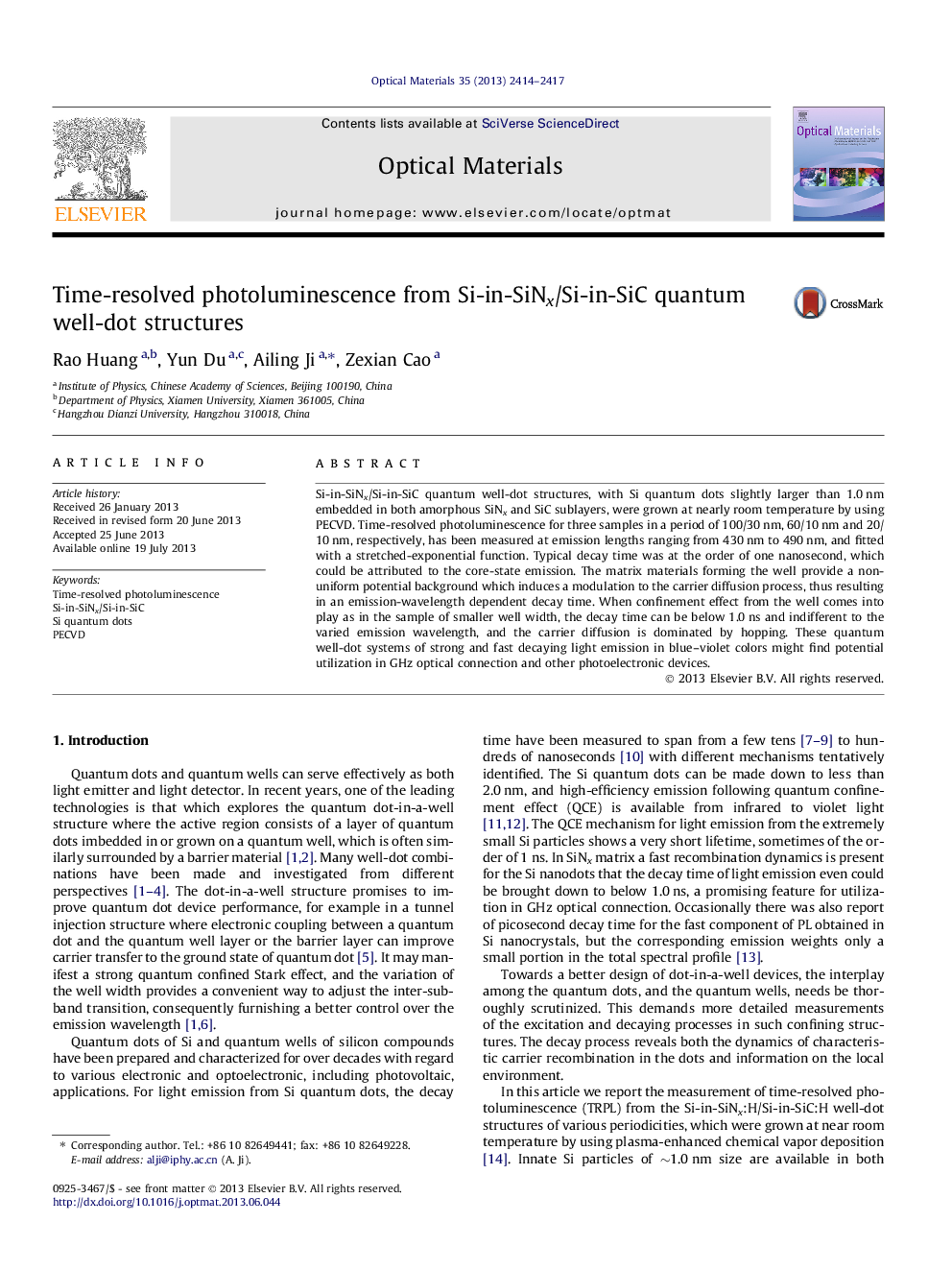| Article ID | Journal | Published Year | Pages | File Type |
|---|---|---|---|---|
| 1494928 | Optical Materials | 2013 | 4 Pages |
Abstract
Si-in-SiNx/Si-in-SiC quantum well-dot structures, with Si quantum dots slightly larger than 1.0Â nm embedded in both amorphous SiNx and SiC sublayers, were grown at nearly room temperature by using PECVD. Time-resolved photoluminescence for three samples in a period of 100/30Â nm, 60/10Â nm and 20/10Â nm, respectively, has been measured at emission lengths ranging from 430Â nm to 490Â nm, and fitted with a stretched-exponential function. Typical decay time was at the order of one nanosecond, which could be attributed to the core-state emission. The matrix materials forming the well provide a non-uniform potential background which induces a modulation to the carrier diffusion process, thus resulting in an emission-wavelength dependent decay time. When confinement effect from the well comes into play as in the sample of smaller well width, the decay time can be below 1.0Â ns and indifferent to the varied emission wavelength, and the carrier diffusion is dominated by hopping. These quantum well-dot systems of strong and fast decaying light emission in blue-violet colors might find potential utilization in GHz optical connection and other photoelectronic devices.
Related Topics
Physical Sciences and Engineering
Materials Science
Ceramics and Composites
Authors
Rao Huang, Yun Du, Ailing Ji, Zexian Cao,
